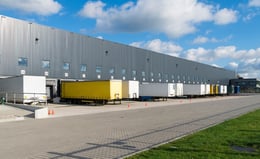How ENisco Mastered Job Shop Scheduling (Case Study)
Brian Hoey - July 12, 2018

 Here at the flexis blog, we’ve spoken on more than one occasion about the inherent difficulties of job shop scheduling and the significant value added potential of developing a smart, digitized workflow for non-timed production planning. Because there is no known algorithm that can efficiently solve the problem of non-clocked production under all circumstances, the pen and paper production planners of the world are almost certainly failing to optimize their machine and personnel usage in job shop production settings. On the other hand, the path to optimal planning can appear dauntingly complex. To help you as you navigate these hurdles, we’re happy to present a case study on ENisco’s successful attempt to master the job shop problem.
Here at the flexis blog, we’ve spoken on more than one occasion about the inherent difficulties of job shop scheduling and the significant value added potential of developing a smart, digitized workflow for non-timed production planning. Because there is no known algorithm that can efficiently solve the problem of non-clocked production under all circumstances, the pen and paper production planners of the world are almost certainly failing to optimize their machine and personnel usage in job shop production settings. On the other hand, the path to optimal planning can appear dauntingly complex. To help you as you navigate these hurdles, we’re happy to present a case study on ENisco’s successful attempt to master the job shop problem.
Background
To begin with you may be wondering, “Who is ENisco, and how can their story help me to better understand my own challenges?” ENisco, an Eisenmann SE subsidiary, has more than 25 years of experience developing and implementing manufacturing execution systems (MES), supervisory control and data acquisition systems (SCADA), and human machine interface solutions (HMI). Together, we were endeavoring to operationalize the mid-term scheduling for an Eisenmann paint shop that was struggling to optimize its non-clocked production.
In addition to creating non-timed production schedules that maximized the paint shop’s use of resources, we were also tasked with creating a digital ecosystem in which non-timed production could be brought into alignment with the requirements of Industry 4.0, which meant integrating job shop operations into smart, connected workflows. In this way, we hoped not just to create efficient mid-term schedules, but to create processes that could respond to changes and disruptions in an agile manner. Anyone who has had to reimagine their non-clocked production in the wake of a shortage or outage knows that the process is fraught with complexity, but we believed that we could build an ecosystem in which carefully mapped tool and machine structures, detailed real-time production feedback, and granular what-if scenarios could bring about unprecedented levels of adaptability.
Methodology
With all of these challenges lined up against us, what approach could we take that would add value and reduce complexity in a holistic, integrative manner? To begin with, we implemented flexis Job Shop Scheduling in the Eisenmann paint shop. We centralized all mission critical data into one cohesive, interoperable system, and created a detailed digital map of all of Eisenmann’s relevant machines, people, processes, etc. All of this was leveraged toward the creation of a more transparent value stream—one in which the path of each order from creation to fulfillment could be tracked and understood by planners.
These changes, in-turn, led to the creation of target-actual comparisons for resource and machine usage as well as complex planning alternatives that maintained value in the face of disruptions. Because of its digital nature, the implemented solution was a natural fit for Industry 4.0 workflows, offering the same level of visibility and transparency that has become increasingly critical in the world of modern manufacturing.
The Results
Once flexis Job Shop Scheduling was successfully implemented, Eisenmann’s paint shop saw a significant reduction in manual planning efforts. Where, previously, non-timed production planning had been such a complex operation that it required countless hours of labor, optimized plans and what-if scenarios could be created on the fly in a highly visible environment. Not only did this add value in terms of saved labor, it helped to improve intra-operational communication and collaboration by way of a share digital interface.
To wit, flexis’ solution was soon integrated with ENisco’s E-MES execution system, helping to create a more holistic, interoperable value chain. In fact, this new level of integration led to the creation of new, distinctly modern workflows. Together at the 2018 Hanover Messe (which ran from April 23rd through April 27th, 2018), flexis and ENisco gave a demonstration of these new workflows as part of our Digital Factory Framework. We called the demonstration “The Paint Shop of the Future,” and we hope that by relating it here we can help our readers to envision a new paradigm for non-clocked production planning in the era of modern manufacturing.
The Paint Shop of the Future (originally presented at Hanover Messe 2018):
- Flexis’ job shop solution compiles mission critical data in order to generate a plan for machine and personnel utilization in the paint shop, which it then transfers to ENisco E-MES
- When a malfunction occurs (either in production or simulation), the details of that malfunction are relayed via E-MES to flexis JSS, which performs a replanning that accounts for the new factory conditions and requirements.
- flexis sends this new plan to E-MES, where it can be seen and acted upon by production planners.
- From there, E-MES sends production data to 5Analytics for analysis.
- Based on that data, 5Analytics determines potential maintenance and default risks lurking in existing plans and workflows.
In this way, non-clocked production enters the Industry 4.0 era. Where once there were risks and potential bottlenecks, there is now a robust, integrated process that turns digital frameworks and real-time production feedback into usable, visible data—the backbone of any agile, modern production stream.
LATEST POSTS
- Understand Circular Economy in The Manufacturing Industry
- How Can Industry 4.0 IT Integration Be Achieved Smoothly?
- The Significance of Order Sequencing in Discrete Manufacturing
- How to improve your Supply Chain Management: The Power of Control Towers
- Optimizing Human Resource Scheduling in Manufacturing: A Technological Approach



